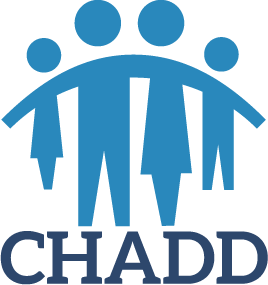Trends in Stimulant Prescription Fills Among Commercially Insured Children and Adults—United States, 2016-2021
Morbidity and Mortality Weekly Report, March 31, 2023 Centers for Disease Control and Prevention Trends in Stimulant Prescription Fills Among Commercially Insured Children and Adults—United States, 2016-2021 Melissa L. Danielson, MSPH1 ; Michele K. Bohm, MPH2; Kimberly Newsome, MPH1 ; Angelika H. Claussen, PhD1 ; Jennifer W Kaminski, PhD2; Scott D. Grosse, PhD3; Lila Siwakoti,…
Read MoreADHD Research News
New ADHD research studies referenced in this week’s ADHD in the News: Bell, Laura J., et al. “ADHD Symptoms in Childhood and Big Five Personality Traits in Adolescence: A Five-Year Longitudinal Study in Girls.” Research on Child and Adolescent Psychopathology 52, no. 9 (September 2024): 1369-1382. DOI: 10.1007/s10802-024-01204-x. Referenced in “Girls with ADHD in childhood…
Read MoreContinuing Education on ADHD
CHADD’s National Resource Center on ADHD in collaboration with the US Centers for Disease Control and Prevention provides training and continuing education on ADHD through its Pocket MD podcast learning platform. The podcast-based courses will help healthcare providers to effectively diagnose, treat, and manage ADHD in children and adults. Continuing education credits available for free…
Read MoreThe Role of Medication
Medication is an integral part of treatment for many children and adults with ADHD. Medication does not cure ADHD; when effective, it eases ADHD symptoms during the time it is active. Medications that most effectively improve the core symptoms of ADHD seem primarily and directly to affect certain neurotransmitters. The neurotransmitters involved are dopamine and…
Read MorePsychosocial Treatment
Psychosocial treatment is a critical part of treatment for ADHD. The scientific literature, the National Institute of Mental Health and many professional organizations agree that behaviorally oriented psychosocial treatments—also called behavior therapy or behavior modification—and stimulant medication have a solid base of scientific evidence demonstrating their effectiveness. Why use psychosocial treatments? Behavioral treatment for ADHD…
Read MoreTreatment of Adults
Adults with ADHD can benefit by identifying the areas of their life that are most impaired by their ADHD and then seeking treatment to address them. Adults with ADHD may benefit from treatment strategies similar to those used to treat ADHD in children, particularly medication and learning to structure their environment. Medications effective for childhood…
Read MoreTreatment Strategies
Treatment of ADHD often requires a multimodal approach and, depending on the age of the individual with ADHD, may include: parent training medication skills training counseling behavioral therapy educational supports education regarding ADHD Treatment should be tailored to the unique needs of each individual and family to help the patient control symptoms, cope with the…
Read MoreClinical Tools Quick Links
Rating Scales and Checklists Scales and checklists help clinicians to obtain information from parents, teachers, and others about symptoms and functioning in various settings, which is necessary for an appropriate assessment for ADHD and treatment monitoring. Symptoms must be present in more than one setting (for example, both at home and in school) to meet DSM-IV…
Read MoreClinical Practice Tools
When evaluating for ADHD, clinicians will use a variety of clinical practice tools to gather information, including standardized clinical rating and self-report checklists, behavior questionnaires and/or rating scales. These tools are an essential component of a comprehensive evaluation for ADHD and provide information needed to screen, diagnose and develop a treatment plan. During treatment, they can…
Read MoreCoexisiting Conditions
CHILDREN The 2007 National Survey of Children’s Health (NCSH) found that 33% of the children with ADHD had one coexisting condition, 16% had two, and 18% had three or more (Larson 2011): ADHD and Coexisting Conditions Coexisting Disorder Children with ADHD Children without ADHD Learning Disability 45% 5% Conduct Disorder 27% 2% Anxiety 18% 2%…
Read MoreDiagnosis in Children
Determining if a child has ADHD is a complex process. Many biological and psychological problems can contribute to symptoms similar to those exhibited by children with ADHD. For example, anxiety, depression and certain types of learning disabilities may cause similar symptoms. In some cases, these other conditions may actually be the primary diagnosis; in others,…
Read MoreDiagnosis in Adults
Clinical guidelines for a diagnosis of ADHD are provided by the American Psychiatric Association in the diagnostic manual Diagnostic and Statistical Manual of Mental Disorders, Fifth Edition (DSM-5). In making the diagnosis, adults should have at least five of the symptoms present. These symptoms can change over time, so adults may fit different presentations from when they…
Read More
